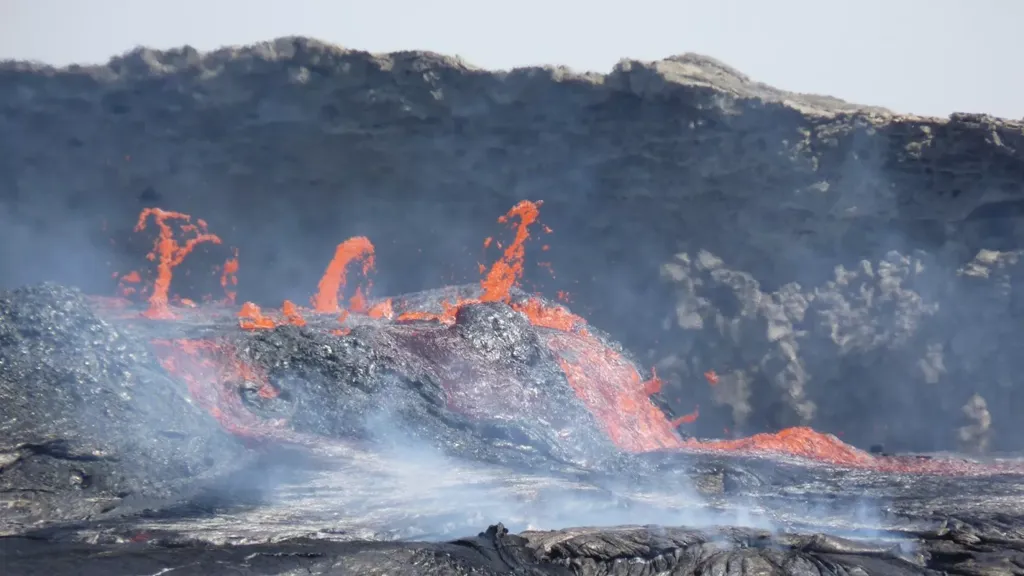A plume of molten rock rising from the depths of the Earth in heartbeat-like pulses is slowly tearing Africa apart -- and will one day create a new ocean.
This is the conclusion of an international team of researchers who have been studying the crust and mantle beneath the Afar region of Ethiopia.
Afar is one of those rare places on Earth where three tectonic rifts meet -- specifically, the Ethiopian, Red Sea and Gulf of Aden Rifts.
As tectonic plates are pulled apart at such rift zones, they stretch out and thin until they break, forming a new ocean basin over the course of millions of years.
Geologists have long suspected that Afar is underlain by a mantle plume, a pillar of upwelling hot material that is helping to drive apart the overlying crust.
Until now, however, little was known about the structure of this plume, or how such phenomena behave under rifting plates.
"We found that the mantle beneath Afar is not uniform or stationary -- it pulses -- and these pulses carry distinct chemical signatures," said lead author and geologist Emma Watts, who undertook the research while based at the University of Southampton, in a statement.
"These ascending pulses of partially molten mantle are channeled by the rifting plates above. That's important for how we think about the interaction between Earth's interior and its surface."
In their study, the researchers collected more than 130 samples of volcanic rock from across both the Afar region and the Main Ethiopian Rift.
They combined their analysis of these samples with existing data and statistical modeling to explore the structure of Earth's crust and mantle beneath Afar.
The team found that the mantle plume underneath the Afar region has distinct chemical bands that repeat across the rift system.
This forms a sort of geological barcode, the spacings of which vary depending on the specific conditions in each arm of the rift.
"The chemical striping suggests the plume is pulsing, like a heartbeat," said paper co-author and Southampton Earth Science professor Tom Gernon in a statement.
"These pulses appear to behave differently depending on the thickness of the plate and how fast it's pulling apart.
"In faster-spreading rifts like the Red Sea, the pulses travel more efficiently and regularly like a pulse through a narrow artery."
The team's findings reveal that the mantle plume beneath Afar is not a static phenomenon, but one that responds dynamically to the tectonic plate above it.
"We have found that the evolution of deep mantle upwellings is intimately tied to the motion of the plates above," said paper co-author and Southampton geophysicist Derek Keir in a statement.
"This has profound implications for how we interpret surface volcanism, earthquake activity and the process of continental breakup."
"The work shows that deep mantle upwellings can flow beneath the base of tectonic plates and help to focus volcanic activity to where the tectonic plate is thinnest."
With their initial study complete, the researchers are now moving to investigate how -- and how fast -- the mantle is flowing beneath the overlying tectonic plates.
